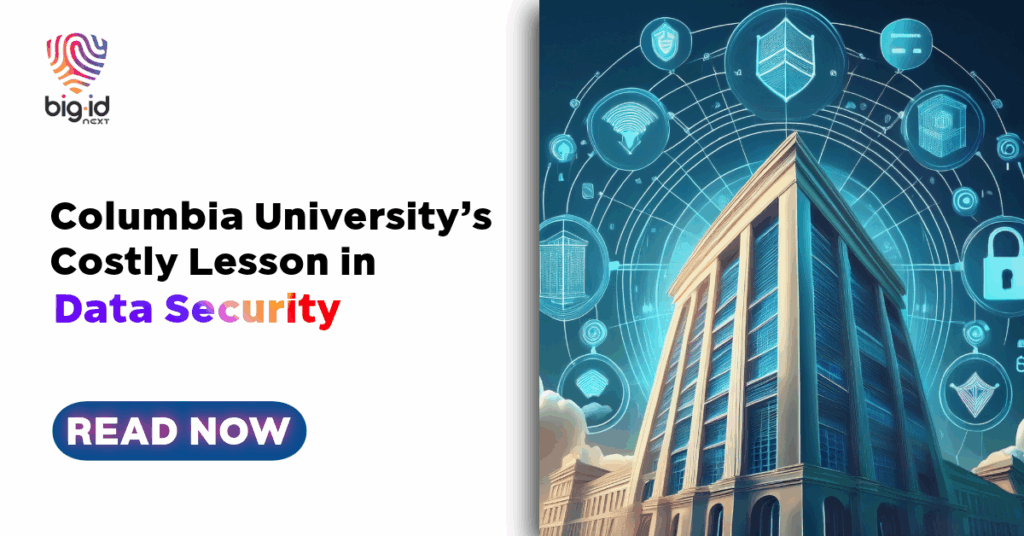Every great institution prides itself on being a place of learning, but sometimes, the most painful lessons aren’t taught in lecture halls. Columbia University, long known for academic excellence, has just endured a crash course in cybersecurity failure. Instead of textbooks, the curriculum consisted of 460 GB of stolen data; instead of professors, the instructors were hackers; and instead of grades, the final score was nearly 870,000 victims facing potential identity theft.
This breach is a reminder that in today’s digital campus, the syllabus must include cyber resilience. No matter how prestigious the institution, ignoring foundational “101-level” data protection principles can result in a very public—and costly—failing grade. The attackers weren’t looking for diplomas; they were after Social Security numbers, financial records, academic information, insurance details, and even health-related data, all of which were left dangerously exposed.
Columbia reassured the public that patient records from its medical center remained untouched. Still, the breadth of access to personal data exposed the institution to serious privacy, regulatory, and reputational risks.
Why is this Breach a Big Deal?
The security incident isn’t your typical “university data breach”, which is similar to the 2019 Georgia Tech database hack, exposing the records of over 1.27 million students, staff, and faculty. In this case, the volume, breadth, diversity, and sensitivity of the stolen data make this incident particularly complex and dangerous. Social Security numbers and financial aid records can fuel large-scale identity theft for years. At the same time, personal contact and academic details can be exploited for targeted scams, phishing campaigns, and even blackmail. For those affected, the risk isn’t short-term—it’s potentially lifelong.
For Columbia, the reputational hit comes on top of possible lawsuits, regulatory investigations, and multimillion-dollar compliance costs. The breach also sends a clear warning to higher education: open, collaborative academic environments can no longer treat cybersecurity and data governance as back-office concerns; in 2025, they must be core institutional priorities.
Lessons Learned for Higher Ed Data Breaches
1. PII and Sensitive Data Visibility Is Non-Negotiable
Too many institutions of higher education are blind to the full extent of the personally identifiable information (PII), protected health information (PHI), and financial data scattered across their systems. For example, Universities often retain decades of student records, sometimes in outdated systems with weak controls, which leaves a massive attack surface. Without visibility, you can’t protect it.
2. Slow Incident Response Amplifies the Damage
In the Columbia case, the breach began in May, but it wasn’t detected until a month later, and full impact disclosure came weeks after that. Every day lost in detection and containment increases the risk of data theft, ransom demands, regulatory issues, and reputational harm.
3. Overexposure of Sensitive Data Is Common and Dangerous
In academic environments, collaborative access is the norm, but this often means sensitive data is overexposed to staff, contractors, and systems that don’t need it. This creates “low-hanging fruit” for insider threats and attackers who can gain entry.
4. Retention Without Governance Equals Risk Accumulation
Institutions often keep sensitive records indefinitely “just in case,” which means when a breach occurs, attackers get access to far more data than they need. Minimizing the data footprint reduces the potential breach scope.
5. Third-Party & Vendor Data Flows Can Be the Weakest Link
Universities depend on numerous vendors such as learning management platforms, payroll processors, and research partners, all of which can access sensitive data. If one of them is compromised, so is the institution.
6. Regulatory Alignment Is a Moving Target
With overlapping regulations (FERPA, HIPAA, GDPR, CCPA, state breach laws), compliance is complex, and gaps can be costly. The Columbia breach will almost certainly invite regulatory review and potential penalties, given its newsworthy impact and relevance.
How Higher Education Could Have Mitigated These Risks
Comprehensive Data Discovery & Classification
Universities store decades of historical records across admissions, alums, HR, and research systems. Proactively scanning and classifying sensitive data like SSNs, financial aid documents, and health info ensures institutions know precisely what they have and where it lives.
BigID’s AI-driven classification automatically identifies PII, PHI, and financial data across on-prem, cloud, hybrid, and legacy environments to secure high-risk datasets, whether structured or unstructured.
Data Minimization & Retention Policies
Colleges often keep data indefinitely “just in case,” creating massive risk exposure. Regularly applying retention rules to purge stale or unnecessary records reduces the impact radius of any breach.
BigID automates policy-based retention and deletion aligned to compliance requirements (FERPA, HIPAA, GDPR, etc.) that mitigate risk and minimize the attack surface.
Access Control & Least Privilege Enforcement
Too often, sensitive student and staff records are overexposed to users who don’t need them. Role-based access, paired with periodic access reviews, limits unauthorized viewing or extraction.
BigID analyzes permission at scale, pinpoints overexposed data, recommends access adjustments, and integrates with IAM tools to enforce least privilege.
Adaptive Risk Monitoring
Periodic security checks can’t match the speed of today’s threats. Higher education institutions need always-on visibility— dashboards, alerts, and automated detection to flag suspicious data access quickly, attempted exfiltration, or policy violations before they escalate.
BigID’s centralized privacy, risk, and compliance dashboards flag unusual activity and high-risk data exposure for immediate investigation, making it easy to demonstrate adherence to multiple regulations and frameworks.
Third-Party & Vendor Risk Management
Universities rely on countless vendors for payroll, admissions, and learning platforms, each one a potential entry point for breaches. Evaluating vendor data handling practices and monitoring ongoing compliance has become more critical daily.
BigID maps and monitors data shared with third parties, assesses vendor compliance posture, and tracks contractual data handling obligations.
Breach Response & Containment
Educational institutions face unique breach response challenges due to the vast diversity and volume of sensitive data they manage, which spans student records, research data, financial information, and health records. Complex, siloed IT environments often slow down incident detection and containment, while decentralized governance makes coordinating a unified response difficult.
BigID’s breach readiness capabilities enable rapid identification of exactly what data was exposed, whose records were impacted, and where the exposure occurred, accelerating notifications, regulatory reporting, and mitigation efforts.
Turning Lessons Into Lasting Change
The Columbia University breach is more than a cautionary tale; it’s a syllabus on what’s at stake when sensitive data is left vulnerable. For higher education, where the trust of students, faculty, and alums is foundational, the cost of a breach extends beyond fines and notifications—it erodes reputation, undermines confidence, and can derail strategic goals for years. Enterprises face the same reality: data protection is an ongoing responsibility. By embracing continuous risk monitoring, automating sensitive data discovery, strengthening access controls, and proactively addressing third-party risks, institutions can turn these lessons into lasting safeguards. With platforms like BigID, organizations can not only keep pace with the evolving threat landscape but also build the resilient, trust-driven data environments that modern education and enterprise demand.
Get a demo to see BigID in action.


